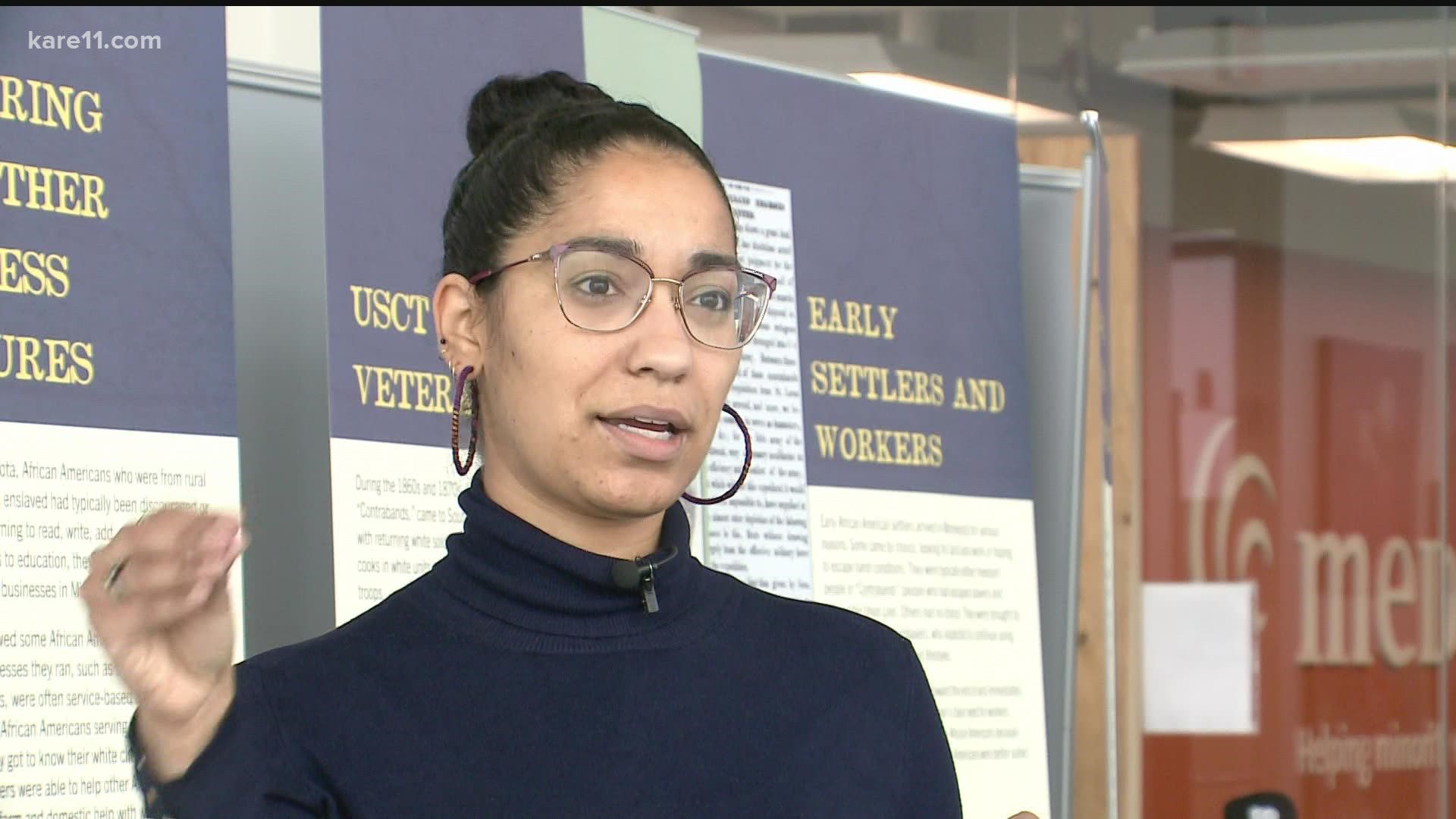MINNEAPOLIS — It’s the mid 1800’s and in the southeast corner of Minnesota, some African Americans families are making a home.
A new exhibit at the Minnesota African American Heritage Museum and Gallery shows just how early some African Americans came north to the southeastern part of state.
"A lot of people don’t even know that there were people down there," Mica Anders, a historian fellow who created the exhibit, said. "There's a sort of common misconception that people came a bit later or the Great Migration in the 40's."
Her exhibit shows photos of people like Amelia Brown and Joseph Parker. Anders said on their gravestone, it says they are some of the early settlers of Owatonna. She said their descendants still live in Saint Paul today.
Anders was also able to find that Black Americans, though very few, owned land during the period after the Homestead Act of 1862.
"When early African Americans would go apply for land or land patents they would just be ignored or they'd say, 'Oh, I never got your application,'" Anders said.
But Louis Harrison did get land. Anders said he was a Civil War soldier from Kentucky. She said it is likely Harrison only got a piece of land in Houston County after white settlers passed on it.
"Not only was he there with his family, he has a lot of other families come live with him, other Black families, so he and his home and land became almost like this teeny tiny Black community," Anders said.
The big reason to come north for these families? Anders said it was jobs, after the Civil and Dakota Wars. But she said there were other ways Black Americans arrived in that part of the state too.
"A lot of people came to work on the farms, other people came obviously for freedom, some people came as enslaved people," she said. "A lot of people don't know that they came enslaved to Minnesota and were enslaved in Minnesota," Anders said.
RELATED: 'This is a really historic moment' | Minneapolis designates all-Black fire station as a landmark
There are currently four exhibits currently on display at the museum. Across from Anders' exhibit is a textile one examining the more than 40,000 children abducted and sold into slavery after Congress banned the slave trade.
On the other wall, abstract art asks questions about how this history is linked to today. There is also a permanent exhibit celebrating the resilience of African Americans in Minnesota.
It is all important to share for one of the museum’s co-founders and curator, Tina Burnside.
"There's this movement to exclude Black people and other people of color from history and I think that that's really important, to have spaces like this and other museums that highlight that history," Burnside said.
Burnside said Black history is marginalized to Dr. Martin Luther King, Jr. and Rosa Parks. "But there's a vast history that needs to be known," she said.
"History is only as well known as they people who tell the history, so a lot of historical societies are fortunate to have people donate their family archives or donate their information. But that's for people whose families were known, so the everyday man, be it an African American family or anybody else, their histories aren't always told. They're not known about and so they get lost," Anders said. "Clearly there's stuff, so it's about what pieces can you put back together through newspapers and census records and photographs, right?"
Anders exhibit is up until July. The museum is free with donations accepted. You can find more information about hours and location here.

